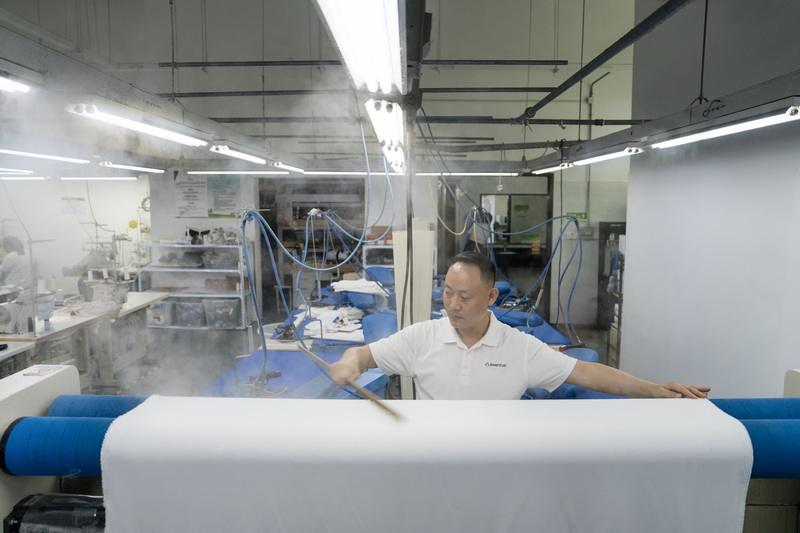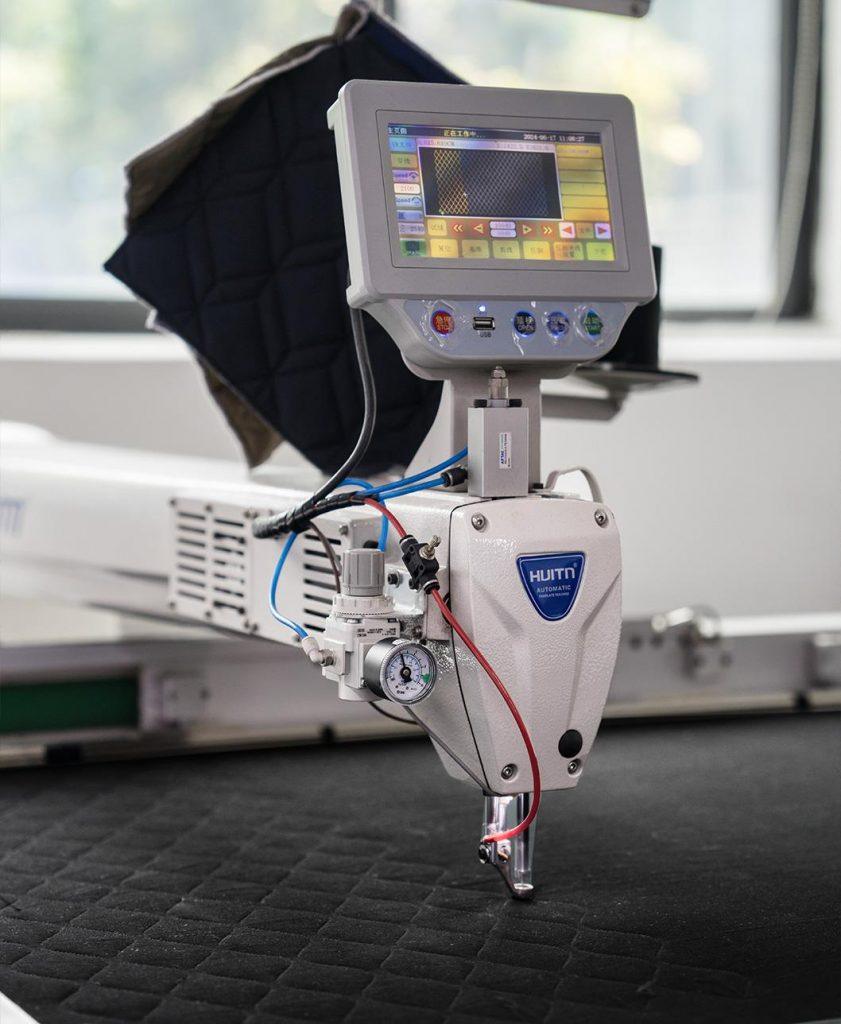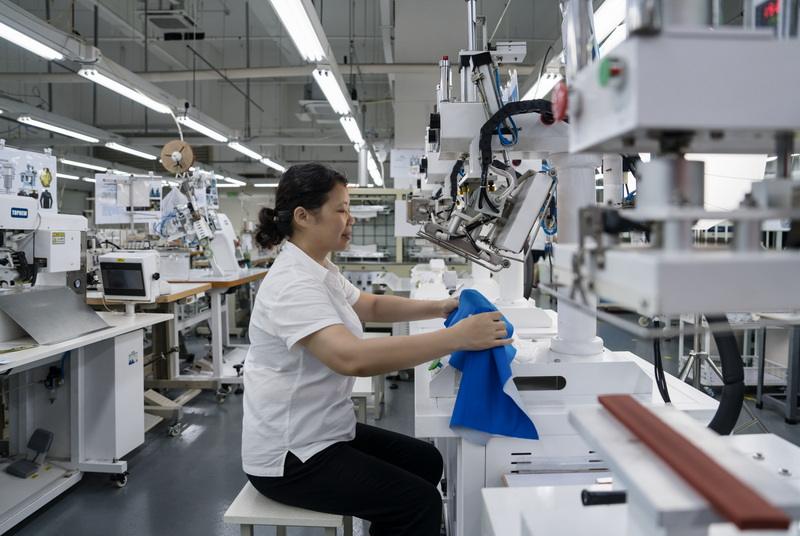Content Menu
● The Environmental Impact of Traditional Yoga Pants Production
● Innovations in Sustainable Fabric Production
● Why Sustainable Fabrics Matter for Wide Leg Yoga Pants
● Key Sustainable Fabrics Used in Wide Leg Yoga Pants Production
>> Hemp
● Supply Chain Insights for Sustainable Wide Leg Yoga Pants
● Overcoming Supply Chain Challenges
● Product Development Expertise in Sustainable Wide Leg Yoga Pants
● Consumer Trends Driving Sustainable Wide Leg Yoga Pants
● Market Trends and Leading Brands
● FAQ
>> 1. What fabrics are best for sustainable wide leg yoga pants?
>> 2. How do sustainable fabrics reduce environmental impact?
>> 3. Are wide leg yoga pants made from sustainable fabrics as durable as traditional ones?
>> 4. What certifications should I look for when buying sustainable yoga pants?
>> 5. How can brands ensure ethical manufacturing in yoga pants production?
In recent years, the activewear market has witnessed a significant shift toward sustainability, particularly in the production of yoga pants. Among various styles, wide leg yoga pants have gained popularity for their comfort, breathability, and versatile style. However, as demand grows, so does the responsibility of manufacturers and brands to incorporate sustainable fabrics and ethical production methods. This article explores why sustainable fabrics matter in the production of wide leg yoga pants, highlighting the environmental, social, and technical advantages of eco-friendly materials, as well as insights into supply chain management and product development.

The Environmental Impact of Traditional Yoga Pants Production
Traditional yoga pants are often made from synthetic fibers such as polyester, nylon, and spandex, which are derived from petroleum-based resources. The production of these materials involves high energy consumption, water usage, and the release of toxic chemicals and greenhouse gases. For example, polyester production emits significant carbon dioxide, while dyeing processes pollute water sources and consume large volumes of water.
Moreover, synthetic fabrics are not biodegradable and contribute to microplastic pollution when washed, affecting marine ecosystems. The fast fashion culture around activewear leads to frequent disposal and replacement, exacerbating textile waste. These environmental challenges underscore the urgent need to transition to sustainable fabrics in yoga apparel manufacturing.
Innovations in Sustainable Fabric Production
Recent advancements in textile technology have introduced innovative sustainable fabrics that further reduce environmental impact. For instance, bio-based polyesters derived from renewable resources like corn and sugarcane are gaining traction as alternatives to traditional petroleum-based polyester. These bio-polyesters offer similar performance characteristics while significantly lowering carbon footprints.
Additionally, advancements in dyeing technology, such as digital printing and waterless dyeing, minimize water consumption and chemical use. These technologies not only reduce pollution but also enable more vibrant and durable colors, enhancing the appeal of sustainable wide leg yoga pants.
Why Sustainable Fabrics Matter for Wide Leg Yoga Pants
Wide leg yoga pants, characterized by their loose, flowing fit and breathable design, are particularly suited to sustainable fabric use for several reasons:
– Comfort and Breathability: Sustainable fabrics such as organic cotton, Tencel, hemp, and bamboo offer superior breathability and softness, enhancing wearer comfort during yoga practice and everyday wear.
– Durability and Longevity: Eco-friendly materials often provide high durability, reducing the need for frequent replacements and minimizing textile waste. For example, recycled polyester can be more durable than virgin polyester, extending the lifespan of yoga pants.
– Lower Environmental Footprint: Sustainable fabrics typically require less water, energy, and chemicals during production. Organic cotton uses up to 91% less water than conventional cotton, and recycled polyester reduces greenhouse gas emissions by up to 50% compared to virgin polyester.
– Ethical Production: Sustainable fabric sourcing often aligns with fair labor practices and certifications such as GOTS (Global Organic Textile Standard) and Fair Trade, ensuring better working conditions within the supply chain.
Key Sustainable Fabrics Used in Wide Leg Yoga Pants Production
Organic Cotton
Organic cotton is grown without synthetic pesticides or fertilizers, promoting healthier soil and biodiversity. It is soft, breathable, and biodegradable, making it ideal for wide leg yoga pants that emphasize comfort and natural feel. However, it may lack the stretchiness of synthetic blends, so it is often combined with small amounts of elastane or recycled polyester for improved flexibility.
Recycled Polyester
Recycled polyester is produced from post-consumer waste such as plastic bottles and discarded garments. It retains the durability, moisture-wicking, and stretch properties of virgin polyester but with a significantly reduced environmental impact. This fabric is particularly useful in wide leg yoga pants that require shape retention and performance during movement.
Tencel (Lyocell)
Tencel is derived from sustainably sourced wood pulp, typically eucalyptus, processed in a closed-loop system that recycles water and solvents. It is biodegradable, soft, moisture-wicking, and breathable, making it an excellent choice for eco-friendly wide leg yoga pants. Its low environmental footprint and luxurious feel appeal to both manufacturers and consumers.
Hemp
Hemp fabric is highly sustainable, requiring minimal water and no pesticides. It is durable, breathable, and naturally antimicrobial. Hemp blends are increasingly used in yoga apparel for their earth-friendly credentials and comfort. While hemp alone may be stiff, blends with organic cotton or recycled fibers improve stretch and softness suitable for wide leg yoga pants.
Recycled Nylon
Recycled nylon, made from repurposed nylon products like fishing nets and fabric scraps, offers strength and elasticity with a lower carbon footprint than virgin nylon. It is used in activewear to provide stretch and durability, complementing other sustainable fibers in wide leg yoga pants production.
Supply Chain Insights for Sustainable Wide Leg Yoga Pants
Transitioning to sustainable fabrics requires careful supply chain management and collaboration with certified suppliers. Key considerations include:
– Material Certification: Working with suppliers providing GOTS, OEKO-TEX, Fair Trade, or Global Recycled Standard (GRS) certifications ensures transparency and compliance with environmental and social standards.
– Ethical Manufacturing: Brands must audit factories to confirm fair labor practices, safe working conditions, and environmental compliance. Local or regional production can reduce transportation emissions and improve oversight.
– Sustainable Packaging: Using recyclable or compostable packaging complements the sustainability of the product, reducing overall environmental impact.
– Durability Testing: Rigorous product development processes test fabric strength, elasticity, colorfastness, and seam durability to ensure long-lasting wide leg yoga pants that resist wear and washing.
– Innovation and Collaboration: Brands and manufacturers increasingly collaborate on fabric innovation, incorporating recycled materials and biodegradable fibers to meet consumer demand for sustainable activewear.
Overcoming Supply Chain Challenges
While the benefits of sustainable fabrics are clear, integrating them into the supply chain presents challenges. Sourcing certified sustainable materials can be costlier and less readily available than conventional fabrics. Manufacturers must navigate fluctuating raw material supplies, certification processes, and compliance audits, which require investment in time and resources.
To address these challenges, many brands adopt a transparent supply chain model, investing in supplier relationships and leveraging technology such as blockchain for traceability. This transparency builds consumer trust and ensures accountability. Additionally, strategic partnerships with fabric innovators and recyclers help stabilize supply and reduce costs over time.
Product Development Expertise in Sustainable Wide Leg Yoga Pants
Developing sustainable wide leg yoga pants demands technical expertise in fabric selection, garment construction, and performance optimization. Key product development aspects include:
– Balancing Comfort and Performance: Combining natural fibers with recycled synthetics achieves the right mix of softness, stretch, moisture management, and durability essential for yoga practice.
– Design for Longevity: Emphasizing quality stitching, reinforced seams, and fabric resilience extends product life, reducing environmental impact over time.
– Eco-Friendly Dyeing: Utilizing low-impact, non-toxic dyes and water-efficient dyeing processes minimizes chemical pollution and water consumption.
– Fit and Style: Wide leg yoga pants must maintain their silhouette during movement; fabric elasticity and recovery are critical to avoid sagging or deformation.
– Consumer Education: Brands increasingly inform customers about the benefits of sustainable fabrics and care instructions to maximize garment lifespan and environmental benefits.

Consumer Trends Driving Sustainable Wide Leg Yoga Pants
Consumer awareness around environmental and social issues has surged, influencing purchasing decisions in the activewear sector. Shoppers are now looking beyond aesthetics and price, prioritizing transparency, sustainability, and ethical production.
Wide leg yoga pants appeal to a broad demographic seeking comfort, style, and versatility, making them an ideal canvas for sustainable innovation. Consumers appreciate fabrics that feel natural against the skin, perform well during workouts, and align with their values. Brands that communicate their sustainability story effectively enjoy increased loyalty and word-of-mouth promotion.
Market Trends and Leading Brands
The demand for sustainable wide leg yoga pants is growing rapidly as consumers become more environmentally conscious and seek versatile, stylish activewear. This trend is driving innovation and competition among brands to offer high-quality, eco-friendly options.
Several brands have pioneered sustainable wide leg yoga pants, integrating eco-friendly fabrics and ethical manufacturing:
– Girlfriend Collective: Offers wide leg yoga pants made from recycled polyester and organic cotton, with inclusive sizing and fair labor certifications.
– Prana: Known for organic cotton, hemp, and recycled polyester blends, Prana emphasizes sustainability and fair trade practices.
– Patagonia: Uses recycled materials and offers durable, repairable yoga pants, underscoring environmental activism.
– Mittoshop: Focuses on comfort and durability with an emerging emphasis on sustainable materials in wide leg styles.
– Lululemon: Recently increased its commitment to sustainability by incorporating recycled and responsibly sourced fabrics in its wide leg yoga pants collections.
The market trend favors versatile, stylish wide leg yoga pants that perform well in both fitness and casual settings while aligning with eco-conscious consumer values.
Conclusion
Sustainable fabrics are integral to the future of wide leg yoga pants production. By choosing eco-friendly materials such as organic cotton, recycled polyester, Tencel, hemp, and recycled nylon, manufacturers can significantly reduce environmental impact, promote ethical labor practices, and deliver high-performance, comfortable products. The supply chain’s transparency and product development innovation further ensure that these yoga pants meet the evolving demands of conscious consumers. Investing in sustainable wide leg yoga pants not only supports a healthier planet but also enhances brand reputation and customer loyalty in a competitive market.
If you are a brand or retailer looking to develop or source sustainable wide leg yoga pants, now is the time to partner with experienced manufacturers who prioritize eco-friendly materials, ethical production, and technical excellence. Contact us today to explore how we can help you bring sustainable, stylish, and high-quality wide leg yoga pants to your customers.

FAQ
1. What fabrics are best for sustainable wide leg yoga pants?
The best sustainable fabrics include organic cotton, recycled polyester, Tencel (Lyocell), hemp, and recycled nylon. These materials offer breathability, durability, and a lower environmental footprint compared to conventional synthetics.
2. How do sustainable fabrics reduce environmental impact?
Sustainable fabrics reduce water usage, energy consumption, chemical pollution, and carbon emissions during production. They are often biodegradable or made from recycled materials, minimizing waste and pollution.
3. Are wide leg yoga pants made from sustainable fabrics as durable as traditional ones?
Yes, many sustainable fabrics like recycled polyester and hemp blends are highly durable and maintain their shape and performance over time, often outperforming traditional materials in longevity.
4. What certifications should I look for when buying sustainable yoga pants?
Look for certifications such as GOTS (Global Organic Textile Standard), OEKO-TEX Standard 100, Fair Trade, and Global Recycled Standard (GRS), which ensure environmental and social responsibility in production.
5. How can brands ensure ethical manufacturing in yoga pants production?
Brands should audit their supply chains, partner with certified factories, ensure fair labor practices, use eco-friendly dyes and processes, and maintain transparency with consumers about sourcing and production.
Hot Tags:
Sustainable Yoga Fabrics, Eco-Friendly Wide Leg Pants, Organic Cotton Yoga Wear, Recycled Yoga Materials, Ethical Yoga Production, Green Activewear, Sustainable Textile Use, Eco Yoga Fashion, Conscious Yoga Clothing, Environmentally Friendly Pants
